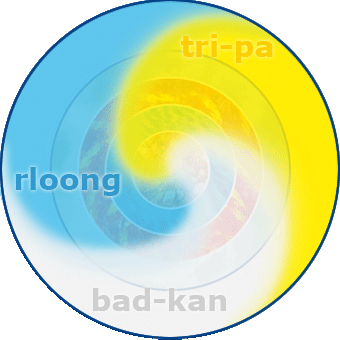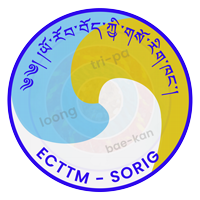
What is Tibetan Medicine? (Sowa-Rigpa)
Traditional Tibetan medicine (Sowa-Rigpa) is a centuries-old medical system providing a holistic approach to health care and based on a systematic and logical framework that shows a complete understanding of the body – and its relationship to the environment – displaying a holistic approach when looking for the causes of illnesses.
Tibetan medicine is a science, art, and philosophy providing a holistic health care approach.
It is a science because its principles are enumerated systematically and logically based on understanding the body and its relationship to the environment. It is an art because it uses diagnostic techniques based on the medical practitioner’s creativity, insight, subtlety, and compassion. It is also philosophy because it embraces the fundamental Buddhist principles of altruism, karma, and ethics. Buddhist philosophy states that everything in the universe is in a constant state of flux – that all phenomena are characterized by impermanence and that the only permanent feature is impermanence itself. As Buddha said, “No matter whether perfect beings arise or not,
it remains a fact, and a hard necessity of existence, that all creations are transitory.” This impermanence causes every being to suffer at one stage or another. Suffering is thus not accidental but springs from a specific cause, whether from this life or a previous life.
Only through proper learning and the actual practice of Dharma can one be liberated from the vicious cycle of suffering.
Five elements and relationship between the mental and physical health
The theory of the five Cosmo elements in Sowa-Rigpa states that an excess, deficiency, or disturbance occurs in three energies that may lead to imbalance.
1. Sa (earth) exerts a more significant influence on forming muscle cells, bones, the nose, and the sense of smell.
2. Chu (water) is responsible for forming blood, body fluids, the tongue, and the sense of taste.
3. Mei (fire) is responsible for body temperature, complexion, the eyes, and the sense of sight.
4. Loong (wind) is responsible for respiration, the nervous system, and the sense of touch.
5. Nam-Kha (space) is responsible for body cavities, the ears, and the sense of hearing.

The three Principal Energies
1. Loong (wind) is one of the three principal energies of the body and mind, manifesting the air element’s nature. It is characterized by rough, light, cold, subtle, hard, and mobile. It is responsible for the physical and mental activities such as respiration, excretion of urine, feces, fetus, menstruation, spitting, burping, speech, immune system, blood circulation, respiration, and hormone systems, and the functions of the five sensory organs. It is particularly associated with the five solid and the six hollow organs.
There are five types of loong energies: life-supporting, ascending, pervasive, fire accompanying, and downward cleansing wind. Once this becomes unbalanced, 42 kinds of Loong (wind) disorders can occur.
2. Tri-pa (Bile) has the nature of fire. It is characterized by oily, sharp, hot, light, fetid, purgative, and fluidity. Tri-pa is responsible for hunger, thirst, digestion, and assimilation, promotes bodily heat, gives luster to body complexion, and provides courage and determination, especially with our metabolism and vascular system. It is particularly associated with organs such as the liver, gall bladder, stomach, and spleen, and 26 different types of Tri-Pa (bile) disorders can occur in an unbalanced state.
3. Bae-kan (Phlegm) is cold and is oily, excellent, heavy, blunt, smooth, firm, and sticky. It is responsible for the firmness of the body and stability of the mind, induces sleep, connects bodily joints, generates tolerance, and lubricates the body. Our lymphatic and central nervous systems are particularly associated with organs such as the kidneys, urinary bladder, pancreas, and male/female reproductive organs. Thirty-three different types of Bae-kan (phlegm) disorders can occur when unbalanced.
Disturbances / Imbalance
The three principal energies Loong (wind), Tri-Pa (Bile), and Bae-kan (Phlegm) can be disrupted due to unhealthy diets and lifestyles. In addition, negative thinking and unconscious processes in your head can also disturb the energy balance. In Tibetan medicine, these mental emotions are called three toxins: attachment, hatred, and delusion.
Relationships between Duksum and the three Principle Energies
| Ma-rig-pa | Ma-rig-pa | Ma-rig-pa | Element | |
| 1 | Doechak/attachment | Loong | Wind | Air |
| 2 | Zhedang/hatred | Tri-Pa | Bile | Fire |
| 3 | Timug/delusion | Bea-kan | Phlegm | Water + Earth |
Healthy Body
Sowa Rigpa (the art and science of healing or traditional Tibetan medicine, astronomy, and astrology) involves properly aligning these divisions, i.e., the three senses of humor, seven bodily constituents, and three excretions, into a state of equilibrium. If this is accomplished, then the body is said to be in the form of healthy or free from physio-psychological physiological disorders. In contrast, disequilibrium in any of these energies constitutes a state of disease or ill health.
།དགེ་བ་འདི་ཡིས་མྱུར་དུ་བདག་། སངས་རྒྱས་སྨན་བླ་འགྲུབ་གྱུར་ནས་།
།འགྲོ་བ་གཅིག་རྐྱང་མ་ལུས་པ་། འདི་ཡི་ས་ལ་འགོད་པར་ཤོག་།
Through these virtues soon became the nature of the Medicine Buddha.
Not a single being. All beings were freed from suffering.
།ཇི་སྲིད་ནམ་མཁའ་གནས་པ་དང་། འགྲོ་བ་ཇི་སྲིད་གནས་གྱུར་བ་།
།དེ་སྲིད་བདག་ནི་གནས་གྱུར་ནས་། འགྲོ་བའི་སྡུག་བསྔལ་སེལ་པར་ཤོག་།།
For as long as the universe abides, as long as the world remains.
Just so long may I be there, resolving all beings’ sufferings.
